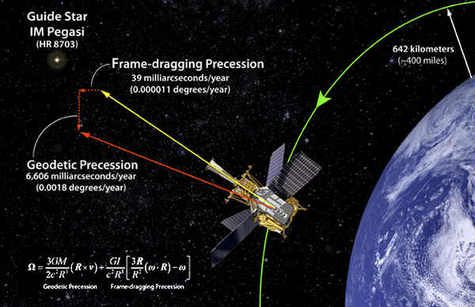-
 Creatine Phosphokinase
Creatine Phosphokinase
-
 Intravenous
Intravenous
-
 Joint venture
Joint venture
-
 Crude oil
Crude oil
-
 Prion
Prion
-
 Key length
Key length
-
 Succinate
Succinate
-
 CD-Photo
CD-Photo
-
 Eris
Eris
-
 Erythematous
Erythematous
-
 Tack
Tack
-
 Magnetic inversion
Magnetic inversion
-
 Affect
Affect
-
 Reach
Reach
-
 Postulate
Postulate
-
 Renal calculi
Renal calculi
-
 Powdery
Powdery
-
 Gmail
Gmail
-
 Invadopodia
Invadopodia
-
 European hornet
European hornet
-
 Drone
Drone
-
 Aplysia
Aplysia
-
 ACERMI
ACERMI
-
 Miller indices
Miller indices
-
 Disaccharide
Disaccharide
-
 Soft base
Soft base
-
 Marginal basin
Marginal basin
-
 Calciphile
Calciphile
-
 Gneiss
Gneiss
-
 Launch centre
Launch centre
Gravity Probe B
Gravity Probe B is an experiment using gyroscopes in space to test two predictions of Einstein's theory of general relativity. The satellite containing the gyroscopes was developed by NASA and Stanford University.
The satellite is in a polar orbit at an altitude of about 650 km. The gyroscope is composed of 4 quartz spheres covered with a layer of niobium. These spheres rotate and are cooled by liquid helium. In the absence of the effects of general relativity, their axes of rotation should remain fixed in space and point in the direction of a star, IM Pegasi.
The curvature of space-time that explains gravitation in general relativity, and the rotation of the Earth according to this same theory, will induce movements of these axes. The exact values of these shifts could either further validate Einstein's theory, or open the way to a theory of gravitation beyond general relativity. The two effects studied are the Einstein-De Sitter effect and frame dragging.
 Gravity Probe B
Gravity Probe B
Latest
Fill out my online form.



